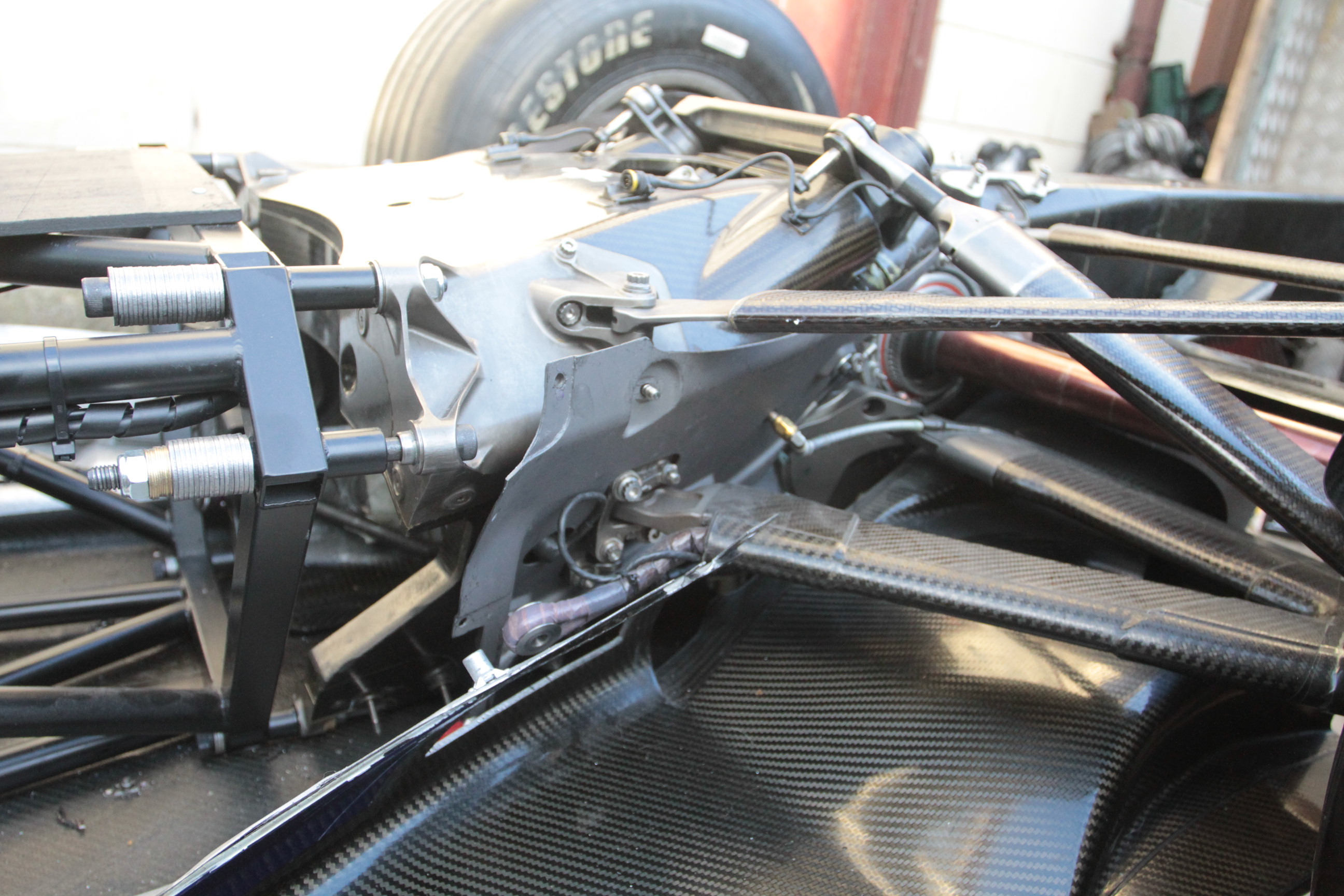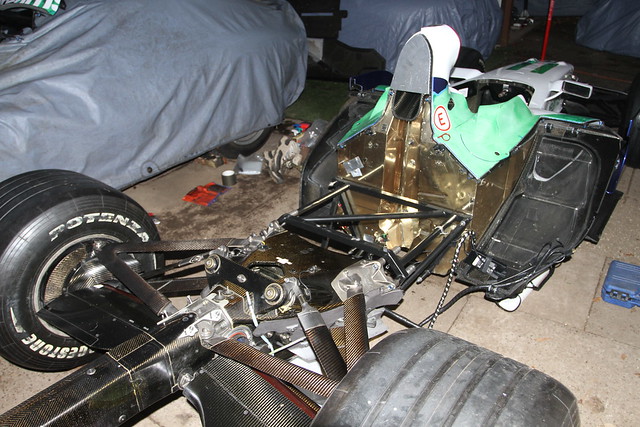747heavy wrote: but all allow for a degree of expansion/movement between the disc and the bell. But a brake disc fixing is, IMHO, not a good comparsion for the problem at hand.
Nevertheless it usually does cater for the difference in the ETC of the materials involved, at least in racing brakes, where delta T is high (in case of the carbon brakes up to 1000K at peak load).
Which is may not the case for mountain bikes, scooters or light FWD car rear brakes.
It's high enough even in some mountainbike applications that something similar has been implemented. Though it is cost prohibitive. In any case the purpose in brakes is to keep the rotors running true and round. if held too tightly the stresses on the rotor have the habit of deforming it leading to all sorts of crappy brake behaviour.
while in our case we're trying to prevent the carbon fiber tub from being destroyed in its efforts to hold the engine in place. But i feel you guys are neglecting a great big built in point of flexure. While it's worth going over the flexure behaviour of the studs it's a lot less of an issue than you may have realized. you guys sort of just swooshed past the picture that matters most. It's not the engine side. As you've all stated quite correctly the aluminium structure will expand some, I would posit that the geometry engine side is a bit too complicated to completely reverse engineer to figure out its degree of expansion, even if we have a rate to work with. NO what you should have been looking at all this time was the firewall. Guuys, it's (atleast since the introduction of the front mounted oiltank) an unconstrained U shape. It provides negligible resistance to the outward expansion of the engine, it is your point of flexion you've been arguing in circles over. The argument that the carbon won't expand is completely and utterly trumped by the macro geometry of the carbon part which in the axis in question is really not very stiff at all.
On top of that, in F1 the fatigue and fretting points are not going to turn into issues. Within reason, if the dowel will hold the machine together five races (and in many cases the dowels themselves are designed to be replaceable) you should be fine.
but that does leave an interesting question that was mooted earlier: namely the behaviour of the aluminium honeycomb in such a warm environment.
@ also in response to bew79, my understanding is that the separation had been designed in, reduce the mass the driver carries as he's tumbling through the air and you reduce the impact forces on his safety structure. And allowing it to break off on the initial impact also absorbs some energy.
the champcar issue seems much simpler, the carbon flexes outwards pushed by the firewall plate. This should lie well within the safety boundaries of the carbon's properties.











